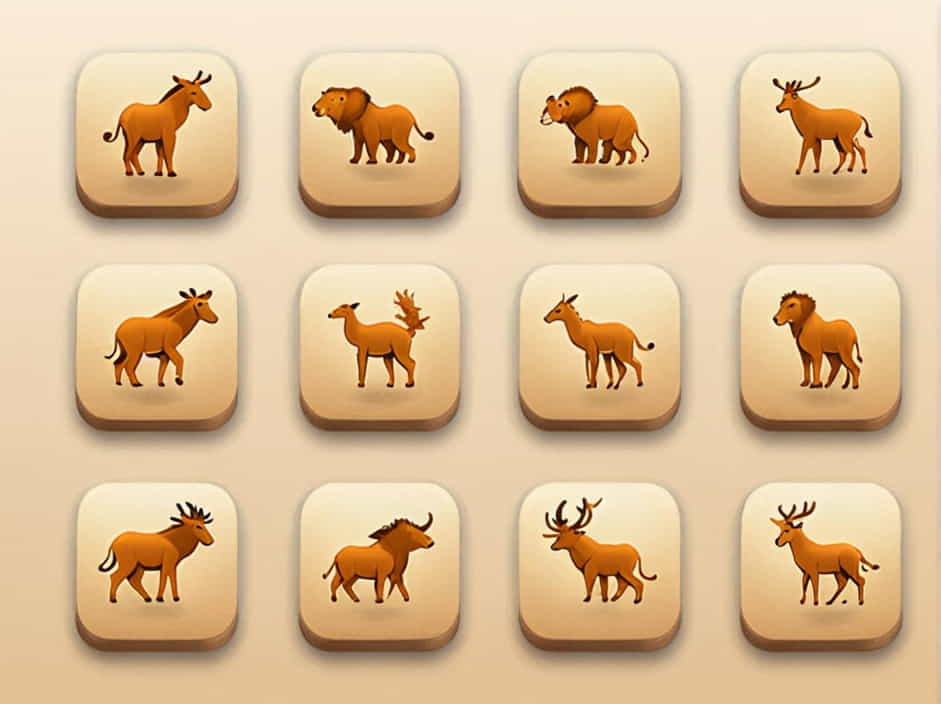The savanna is home to some of the most fascinating animals on Earth. This vast grassland ecosystem, found in Africa, South America, Australia, and India, supports a diverse range of wildlife adapted to its unique environment. From towering elephants to speedy cheetahs, the savanna is a place of survival, adaptation, and constant movement.
What Is a Savanna?
A savanna is a grassy plain with scattered trees and shrubs. It has a warm climate with distinct wet and dry seasons. The dry season can last for months, making water sources crucial for survival. Despite these challenges, many animals thrive in this environment, each playing a role in the delicate balance of the ecosystem.
Mammals of the Savanna
1. African Elephant (Loxodonta africana)
The African elephant is the largest land animal in the world. These gentle giants roam the savanna in search of food and water. They use their trunks to drink, grab food, and communicate. Due to their size, they have few natural predators, but poaching and habitat loss threaten their survival.
2. Lion (Panthera leo)
Known as the “king of the jungle,” lions are actually more common in the savanna. They live in prides, which consist of multiple females, their cubs, and a few dominant males. Lions rely on teamwork to hunt large herbivores such as zebras and wildebeests.
3. Cheetah (Acinonyx jubatus)
The cheetah is the fastest land animal, reaching speeds of up to 70 mph (113 km/h) in short bursts. Unlike lions, cheetahs are solitary hunters. They rely on speed and stealth to catch prey, mainly small antelopes.
4. Giraffe (Giraffa camelopardalis)
Giraffes are the tallest land animals, reaching up to 18 feet (5.5 meters) in height. Their long necks allow them to eat leaves from tall trees, avoiding competition with other herbivores. Giraffes are social animals and move in loose groups.
5. Zebra (Equus quagga)
Zebras are known for their black-and-white striped coats. Each zebra has a unique pattern, much like a human fingerprint. They live in herds and use their speed and agility to escape predators. Zebras often migrate in search of fresh grass and water.
6. Wildebeest (Connochaetes spp.)
Wildebeests are famous for their annual migration, one of the most spectacular events in nature. Millions of wildebeests, along with zebras and gazelles, travel in search of better grazing areas. This migration attracts predators such as lions and crocodiles.
Predators and Scavengers
7. Hyena (Crocuta crocuta & Hyaena spp.)
Hyenas are often misunderstood as mere scavengers, but they are skilled hunters as well. Spotted hyenas live in clans and have powerful jaws capable of crushing bones. They compete with lions for food and play a crucial role in cleaning up the savanna by eating carcasses.
8. African Wild Dog (Lycaon pictus)
African wild dogs, also known as painted dogs, are among the most efficient hunters in the savanna. They hunt in packs and have an 80% success rate, much higher than lions. Unfortunately, their numbers are declining due to habitat loss and disease.
9. Crocodile (Crocodylus niloticus)
Crocodiles lurk in rivers and watering holes, waiting for unsuspecting animals to approach. They are ambush predators with powerful jaws capable of snapping large prey in an instant. During the wildebeest migration, crocodiles feast on animals crossing the rivers.
Birds of the Savanna
10. Secretary Bird (Sagittarius serpentarius)
This unique bird of prey is known for its long legs and distinctive feathers. Unlike most raptors, the secretary bird hunts on the ground, stomping on snakes and small mammals with powerful kicks.
11. Ostrich (Struthio camelus)
The ostrich is the largest and fastest-running bird in the world. Although it cannot fly, it can reach speeds of up to 60 km/h (37 mph). Ostriches use their strong legs to defend themselves from predators like lions and hyenas.
12. African Fish Eagle (Haliaeetus vocifer)
With its striking white head and sharp talons, the African fish eagle is one of the most recognizable birds of the savanna. It primarily feeds on fish but also hunts small mammals and birds. Its loud call is often heard near lakes and rivers.
Reptiles and Amphibians
13. Black Mamba (Dendroaspis polylepis)
The black mamba is one of the most feared snakes in Africa. It is extremely fast, aggressive, and highly venomous. Despite its name, it is not black but has a dark mouth, which it displays when threatened.
14. Nile Monitor Lizard (Varanus niloticus)
These large lizards are excellent swimmers and can be found near rivers and lakes. They feed on eggs, fish, and small mammals. They play an important role in controlling rodent populations.
15. Tortoises and Frogs
The savanna is home to various tortoises and frogs that thrive near water sources. Some species, like the African bullfrog, can survive long dry seasons by burying themselves underground.
The Role of Insects in the Savanna
16. Termites
Termites are crucial for the savanna ecosystem. They break down dead plant material, enriching the soil with nutrients. Their mounds provide shelter for other animals, such as snakes and small mammals.
17. Dung Beetles
Dung beetles recycle animal waste, improving soil quality and preventing the spread of disease. They can roll balls of dung many times their own body weight.
18. Mosquitoes and Tsetse Flies
While they are often seen as pests, mosquitoes and tsetse flies are part of the savanna’s food chain. They provide food for birds, bats, and other small predators. However, tsetse flies can spread diseases like sleeping sickness.
Conservation Challenges
Many animals in the savanna face threats from habitat destruction, climate change, and poaching. Conservation efforts, including national parks and wildlife reserves, help protect these species. Eco-tourism also plays a role in raising awareness and funding conservation projects.
The savanna is a rich and diverse ecosystem, home to a wide variety of animals. From majestic elephants and fierce lions to hardworking dung beetles, every creature has a role in maintaining the balance of nature. Protecting this unique environment ensures that future generations can continue to witness the incredible wildlife of the savanna.
